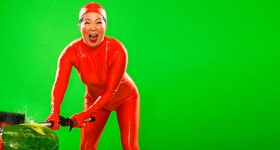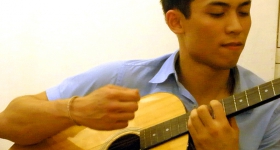Roland
Yamamoto's 2014 documentary, Hula: Merrie
Monarch's Golden Celebration, provides an in-depth look at the now 50-year-old
celebration, named in honor of King David Kalakaua, who was sometimes referred
to as the “Merrie Monarch.” The festival was launched in 1964, as a means to
revitalize Hilo’s fallen economy and boost the morale of its people. The hula
competition was introduced in 1971.
Interviews
given by various key players in the festival’s golden anniversary, including
respected kumu hula (hula teachers), competition judges, and former Miss
Aloha Hula title winners, reveal tight-knit bonds forged through the competition. Within the world of hula, everyone is ohana, or family. Kumus
proudly speak of their graduating pupils, who dance together for the last time
at the festival. Former dancers recount their joy at being able to reunite with
each other on the now world-renowned stage.
A minor flaw within the film is its transitions between
sections, which could flow more smoothly. Fortunately, each
time the screen fades to black, there’s only a couple seconds’ delay before the
viewer’s attention is reeled back in by a meaningful sound bite or an
eye-catching image.
Behind-the-scenes
footage and competition segments from the 2013 Merrie Monarch Festival provide
rich stimulation for the eyes and ears. The chants and moves of the dancers
exude a captivating energy that can be appreciated by all, whether they're
familiar with the cultural aspect of hula or not.
From the fond recollections of festivals past to
the performance given by Manalani English, Miss Aloha Hula 2013, the reverence
the Hawaiians hold for the Merrie Monarch Festival, as well as the passion they
have for their craft, is evident throughout the film. As summed up by its final
quote: “Hula is the language of the heart, therefore, the heartbeat of the Hawai'ian
people.”
For more on Hula and CAAMFest, including showtimes and tickets, click here.









Comments